- Home
- Randall Garrett
Hanging by a Thread Page 2
Hanging by a Thread Read online
Page 2
wrong.
How small must a piece of matter be before it is no longer a meteor?
Fortunately, the big hunks rarely travel at more than about two timesten to the sixth centimeters per second, relative to Sol, in the SolarSystem. But there are little meteors--_very_ tiny ones--that come in,hell-bent-for-leather, at a shade less than the velocity of light.They're called cosmic rays, but they're not radiation in the strictsense of the word. A stripped hydrogen atom, weighing on the order ofthree point three times ten to the minus twenty-second grams, restmass, can come galumping along at a velocity so close to that of lightthat the kinetic energy is something colossal for so small a particle.Protons with a kinetic energy of ten to the nineteenth electron volts,while statistically rare, are not unusual.
Now, ten million million million electron volts may be a wee bitmeaningless to the average man, so let's look at it from anotherangle.
Consider. According to the well-known formula E = mc^2, a single gramof matter, if converted _completely_ into energy, would yield somenine hundred million million million ergs of energy. An atomic bombyields only a fraction of that energy, since only a small percentageof the mass is converted into energy.
If _all_ of the mass of an atomic bomb were converted into energy, thetest in Alamogordo, New Mexico, 'way back in 1945, would probably havebeen the last such test on Earth; there wouldn't have been anyonearound to make a second test.
So what does this have to do with cosmic ray particle? Well, if thatatomic bomb had been moving at the velocity with which ourten-to-the-nineteenth-electron-volts proton is moving, it could havebeen made of sand instead of U^235. It would have produced tenthousand million times as much energy as the total disintegration ofthe rest mass would have produced!
Kinetic energy, my children, has a great deal more potential thanatomic energy.
But we digress.
What has all this to do with Jayjay Kelvin?
If Jayjay had been a detective story addict instead of a Western storyaddict, he would have heard of the HIBK or "Had I But Known" school ofdetective writing. You know: "Had I But Known that, at that moment, inthe dismal depths of a secret underground meeting place, the evilChuman-Fu was plotting...."
If Jayjay Kelvin had known what was going on a few million miles awayfrom the Pluto-bound _Persephone_, he would have kept his mouth shut.
* * * * *
The cargo-ship _Mordred_ was carrying a cargo of heavy metals sunward.In her hold were tightly-packed ingots of osmium-iridium-platinumalloy, gold-copper-silver-mercury alloy, and small percentages ofother of the heavy metals. The cargo was to be taken to the AsteroidBelt for purification and then shipped Earthward for finaldisposition. The fact that silver had replaced copper for electricalpurposes on Earth was due to the heavy-metals industry on Pluto.Because of Pluto, the American silver bloc had been broken at last.
The _Mordred_ was approaching turnover.
Now, with a gravito-inertial drive, there is really no need to turn aship over end-for-end as she approaches the mid-point of hertrajectory. Since there is no rocket jet to worry about, all that isreally necessary is to put the engine in reverse. In fact, the patrolships of the Interplanetary Police do just that.
But the IP has been trained to take up to five standard gees in anend-to-end flip, and the ships are built to take the stress in bothdirections. An ordinary cargo ship finds it a lot easier to simplyflip the ship over; that way, the stresses remain the same, and theceiling-floor relationship is constant.
The _Mordred_ had been having a little trouble with her Number Threedrive engine, so the drive was cut off at turnover, while the engineerreplaced a worn bearing. At the same time, the maintenance officerdecided he'd take a look at the meteor-bumper--the plastic outer hull.Since the ship was in free fall, all he had to do was pull himselfalong one of the beams that supported the meteor-bumper away from themain hull. The end of one of the beams had cracked a part of thebumper hull--fatigue from stress, nothing more, but the hull might aswell be patched while the drive was off.
It was a one-man job; the plastic was dense, but under null-geeconditions it was easy to maneuver. The maintenance officer repairedthe slight crack easily, wiped the sticky pre-polymer from the fingersof his spacesuit gloves, and tossed the gooey rag off into space. Thenhe pushed himself back across the vacuum that separated the outer hullfrom the inner, entered the air lock, and reported that the job wasfinished. Five minutes later, the _Mordred_ began decelerating towardthe distant Asteroid Belt.
Forget the _Mordred_. The ship is no longer important. Keep your eyeson that rag. It's a flimsy thing, composed of absorbent plastic andgooed up with a little unpolymerized resin, weighing about fiftygrams. It is apparently floating harmlessly in space, just beyond theorbit of Uranus, looking as innocuous as a rag can look. But it ismoving sunward at eight hundred million centimeters per second.
* * * * *
The _Persephone_ was approaching turnover. The ship's engineerreported that the engines were humming along smoothly, so there was noneed to shut them off; the ship would simply flip over as she ran,making her path a slightly skewed, elongated S-curve--a sort oforbital hiccup.
Except that she never quite made it through the hiccup. The ship wasalmost perpendicular to her line of flight when she was sideswiped.
Her meteor detectors hadn't failed; they were still functioningperfectly. But meteor detectors are built to look for solid chunks ofmetal and rock--not thin, porous bits of cloth.
The rag had traveled a good many millions of miles since it had beencast overboard; it was moving sunward with almost the same velocitywith which the _Persephone_ was moving Plutowards. The combinedvelocities were such that, if it had hit the _Persephone_ dead on, itwould have delivered close to seventeen thousand kilowatt-hours ofenergy in one grand burst of incandescence.
Fortunately, the tip of the rag merely gave the ship a slap on thetail as it passed. The plastic meteor-bumper wasn't built to take thatsort of thing. The plastic became an expanding cloud of furiouslyincandescent gas in a small fraction of a second, but the velocity ofthat bit of rag was so great that the gas acted as a solid block ofsuperheated fury as it leaped across the hundred feet of vacuum whichseparated the bumper hull from the inner hull.
A rocket-driven missile carrying a shaped-charge warhead weighingseveral hundred pounds might have done almost as much damage.
* * * * *
Jayjay Kelvin moved his arms to pick himself up off the floor andfound that there was no necessity for doing so. He was floating in theair of the lounge, and, strictly speaking, there was no floor anyway.He opened his eyes and saw that that which had been the floor was nowjust another wall, except that it had chairs bolted to it. It rose onhis left, reached the zenith, and set on his right, to be replaced byanother wall, and then by what had been the ceiling. The second timethe floor came round, Jayjay began to wonder whether he was spinningaround his longitudinal axis or whether the ship was actually rotatingabout him. He closed his eyes again.
He didn't feel more than a little dizzy, but he couldn't be surewhether the dizziness was caused by his spinning or the blow on hishead. He opened his eyes again and grabbed at the book that wasorbiting nearby, then hurled it as hard as he could toward thesometime ceiling. "The Pride of the Pecos" zoomed rapidly in onedirection while Jayjay moved sedately in the other.
The ship was spinning slightly, all right. When he finally grabbed achair, he found that there was enough spin to give him a weight of anounce or two. He sat down as best he could and took a good lookaround.
Aside from "The Pride of the Pecos" and a couple of other books, theair was remarkably free from clutter. There hadn't been much loosestuff laying around. A pencil, a few sheets of paper--nothing more.
There was one object missing. Jayjay looked around more carefully, andthis time he saw a hand protruding from the space "beneath" the lowtable. He bent down for a better look and saw tha
t Jeffry Hull wasunconscious. Blood from his nose was spreading slowly over his face,and one eye looked rather battered. Jayjay grasped the protrudingwrist and felt for a pulse. It was pumping nicely. He decided thatHull was in no immediate danger; very few people die of a bloody nose.
The lighting in the lounge was none too good; the low-power emergencysystem had come on automatically when the power from the ship'sengines had died. Jayjay wondered just what had happened. There hadbeen a hell of an explosion; that was all he knew.
He wondered if anyone else aboard was alive and conscious, and decidedhe might as well find out. He took a long dive toward the centralstairwell that ran the length of the ship's long axis and looked down.The emergency door to the cargo hold was closed. No air, most likely.The way up looked clear, so he scrambled up the spiral stairway.
A few feet farther up, he found that he had passed the center of theship's rotation. The _Persephone_ was evidently toppling

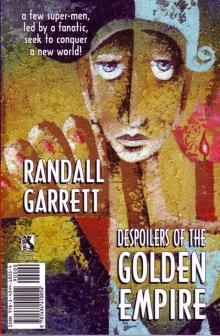 Despoilers of the Golden Empire
Despoilers of the Golden Empire The Highest Treason
The Highest Treason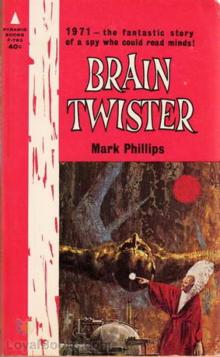 Brain Twister
Brain Twister The Judas Valley
The Judas Valley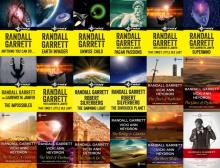 The Impossibles
The Impossibles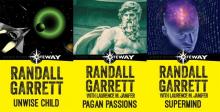 Pagan Passions
Pagan Passions Quest of the Golden Ape
Quest of the Golden Ape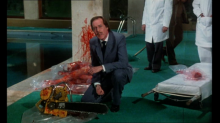 Psichopath
Psichopath By Proxy
By Proxy Damned If You Don't
Damned If You Don't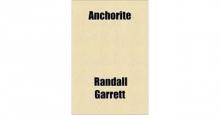 Anchorite
Anchorite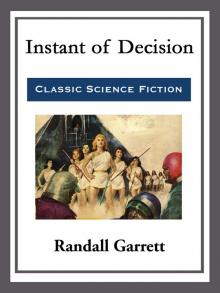 Instant of Decision
Instant of Decision The Bramble Bush
The Bramble Bush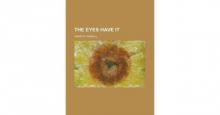 The Eyes Have It
The Eyes Have It Dead Giveaway
Dead Giveaway ...After a Few Words...
...After a Few Words... Black Eyes and the Daily Grind
Black Eyes and the Daily Grind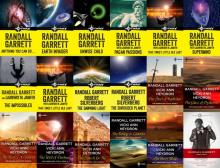 That Sweet Little Old Lady
That Sweet Little Old Lady With No Strings Attached
With No Strings Attached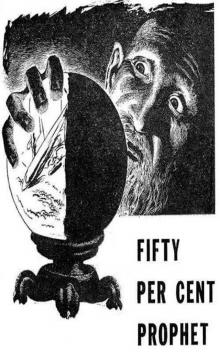 Fifty Per Cent Prophet
Fifty Per Cent Prophet The Asses of Balaam
The Asses of Balaam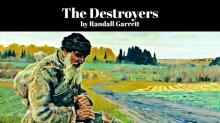 The Destroyers
The Destroyers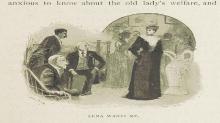 But, I Don't Think
But, I Don't Think Cum Grano Salis
Cum Grano Salis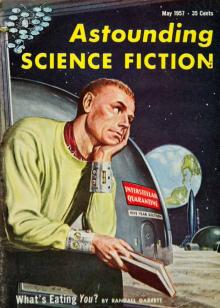 In Case of Fire
In Case of Fire Hanging by a Thread
Hanging by a Thread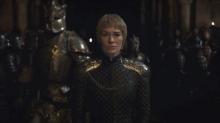 Heist Job on Thizar
Heist Job on Thizar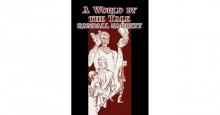 A World by the Tale
A World by the Tale Nor Iron Bars a Cage....
Nor Iron Bars a Cage.... Suite Mentale
Suite Mentale The Man Who Hated Mars
The Man Who Hated Mars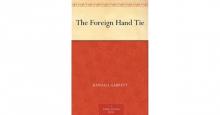 The Foreign Hand Tie
The Foreign Hand Tie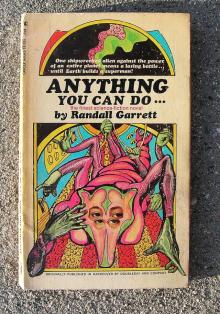 Anything You Can Do ...
Anything You Can Do ...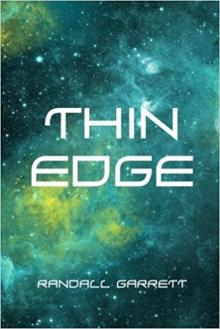 Thin Edge
Thin Edge ...Or Your Money Back
...Or Your Money Back Viewpoint
Viewpoint Hail to the Chief
Hail to the Chief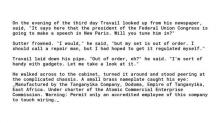 Made in Tanganyika
Made in Tanganyika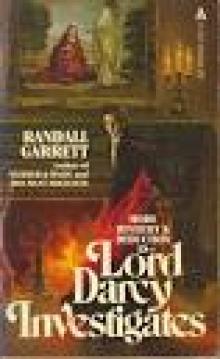 Lord Darcy Investigates
Lord Darcy Investigates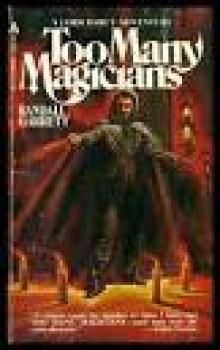 Too Many Magicians
Too Many Magicians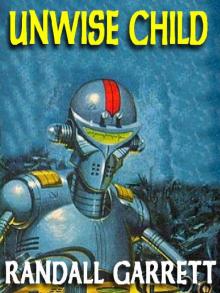 Unwise Child
Unwise Child A Spaceship Named McGuire
A Spaceship Named McGuire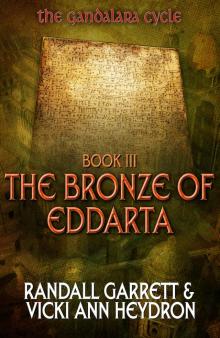 The Bronze of Eddarta
The Bronze of Eddarta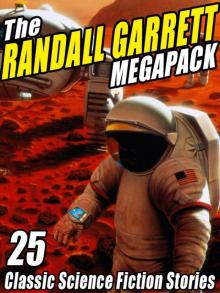 The Randall Garrett Megapack
The Randall Garrett Megapack Return to Eddarta
Return to Eddarta Too Many Magicians (lord darcy)
Too Many Magicians (lord darcy) The Well of Darkness
The Well of Darkness Takeoff!
Takeoff!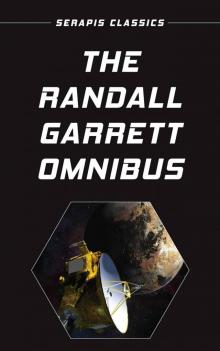 The Randall Garrett Omnibus
The Randall Garrett Omnibus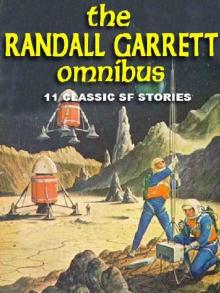 The Randall Garrett Omnibus: Eleven SF Classics
The Randall Garrett Omnibus: Eleven SF Classics The Second Randall Garrett Megapack
The Second Randall Garrett Megapack The River Wall
The River Wall The Glass of Dyskornis
The Glass of Dyskornis The Search for Kä
The Search for Kä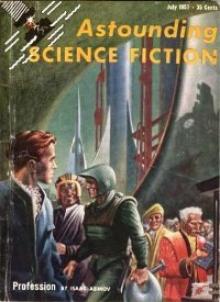 The Best Policy
The Best Policy